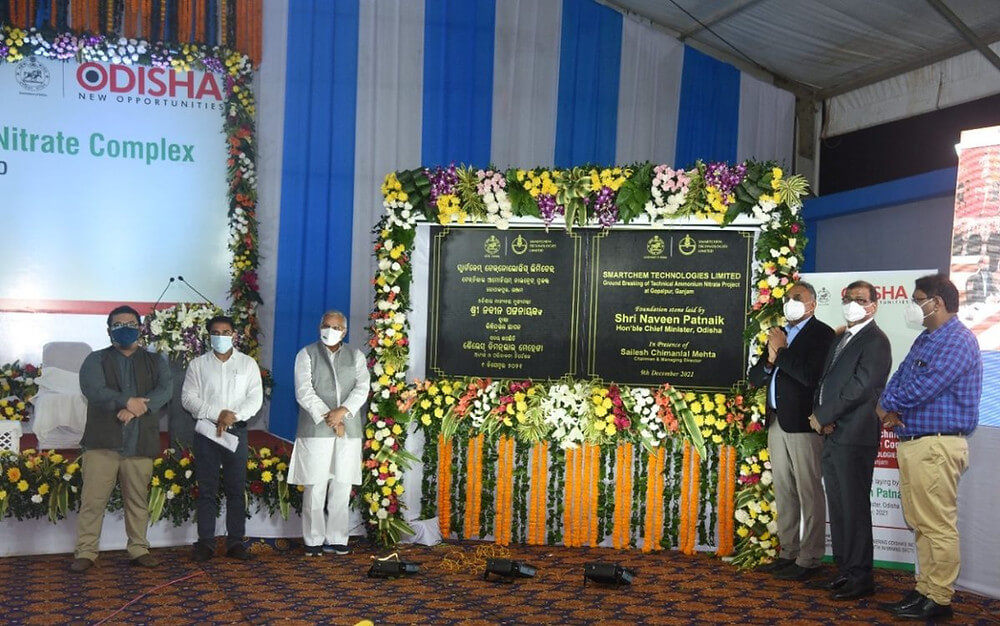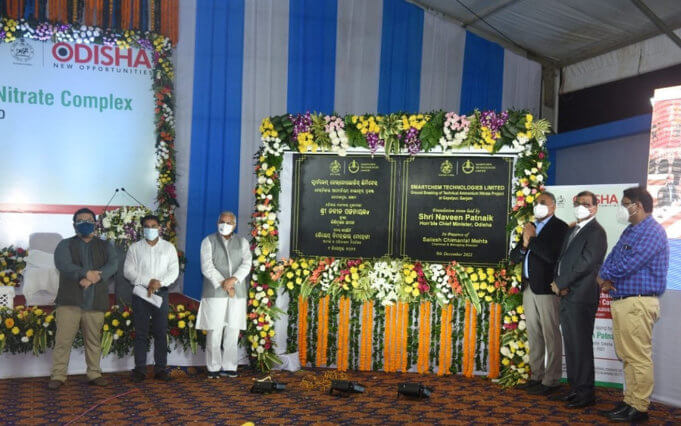 Smartchem Technologies (STL), a 100 percent subsidiary of the Deepak Fertilisers and Petrochemicals Corporation (DFPCL), a chemicals and fertiliser manufacturer in India, performed groundbreaking ceremony and foundation stone laying of its Technical Ammonium Nitrate (TAN) complex at Gopalpur Industrial Park in Odisha on 9 December 2021.
Smartchem Technologies (STL), a 100 percent subsidiary of the Deepak Fertilisers and Petrochemicals Corporation (DFPCL), a chemicals and fertiliser manufacturer in India, performed groundbreaking ceremony and foundation stone laying of its Technical Ammonium Nitrate (TAN) complex at Gopalpur Industrial Park in Odisha on 9 December 2021.
Chief Minister of Odisha, Naveen Patnaik, laid the foundation of the project. The project at Tata Steel Industrial Park is being built with an investment of Rs 2,200 crore and will have a capacity of 377 kilo tpa.
The plant has the best-in-class technology from Casale that will ensure it is the safest plant with the lowest possible emission.
The project is expected to be completed by August 2024, 50 percent of the engineering work is already completed and the piling work will begin from January 2022. It is strategically located near the major mining hubs and the Gopalpur Port to capture domestic demands and tap into export opportunities.
Technical Ammonium Nitrate, being an international commodity, this project will put Odisha on the map for international recognition.
On the project completion and commencement, Odisha will become a key source of TAN to the entire Eastern Belt where majority of mining and infrastructure growth is foreseen in future. It will generate employment for 1,500 people during the project phase and 325 people during the operation phase.
It also holds the possibility of attracting investment in ancillary units like explosive manufacturers, manufacturers of LDPE/HDPE bags and liners, among others. It is part of DFPCL’s initiative to be closer to the end-user and add maximum value to them, by being a solution provider and reduce the supply deficit and reduce the resultant import substitution of more than Rs 4,500 crore.
Additionally, the project will contribute Rs 3,000 crore in GST and Rs 1,100 crore in Income Tax to the exchequer over 10 years. It ensures maximum recycle and reuse of effluents and use of freshwater is optimised.
The emission and discharge from the plant will be one of the lowest and it features advanced NOx/N2O abatement technologies. The plant is expected to generate 4.5 MW power from the waste heat steam.











